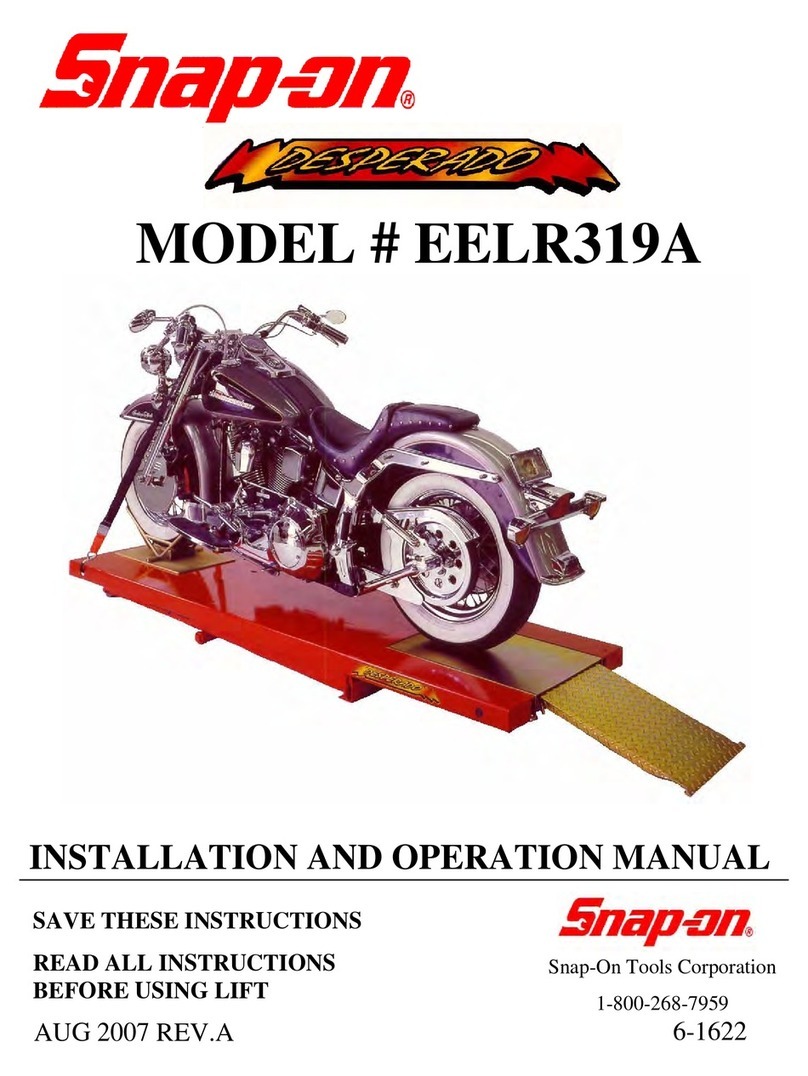
TABLE OF CONTENTS
PAGE
1 SAFETY AND OPERATING INSTRUCTIONS............................................................................. 2
2 SPECIFICATIONS ............................................................................................................................ 3
3 CONTENTS ........................................................................................................................................ 4
4 INSTALLATION REQUIREMENTS.............................................................................................. 4
5 INSTALLATION INSTRUCTIONS ................................................................................................ 5
5.1 UNPACKING PROCEDURE.......................................................................................................... 5
5.2 BAY LAYOUT................................................................................................................................ 6
5.3 SAFETY SHUT-OFF BAR INSTALLATION................................................................................ 6
5.4 SAFETY SHUT-OFF BAR ADJUSTMENT................................................................................... 7
5.5 TOWER POSITIONING AND SETUP........................................................................................... 8
5.6 ARM INSTALLATION................................................................................................................... 8
5.7 ARM RESTRAINT INSTALLATION ………………………………………………………...….9
5.8 POWER PACK INSTALLATION ................................................................................................ 10
5.9 HYDRAULIC SYSTEM INSTALLATION.................................................................................. 11
5.10 SAFETY RELEASE CABLE ROUTING AND ADJUSTMENT ................................................. 13
5.11 HYDRAULIC SYSTEM BLEEDING AND LEVELING PROCEDURE................................ 14
5.12 HYDRAULIC ADJUSTMENT PROCEDURE........................................................................ 16
5.13 TOWER POSITIONING AND ANCHORING ........................................................................ 16
5.14 SHIMMING OF THE REMAINING TOWER ......................................................................... 18
6 LIFT MAINTENANCE GUIDLINES............................................................................................ 19
6.1 SAFETY INSTRUCTIONS........................................................................................................... 19
6.2 PERIODIC MAINTENANCE....................................................................................................... 19
7 SAFETY AWARENESS - AUTOMOTIVE LIFT INSTITUTE (ALI) ....................................... 21
8 PARTS MANUAL ............................................................................................................................ 22
8.1 LIFT ASSEMBLY......................................................................................................................... 22
8.2 LIFT ASSEMBLY PARTS LIST................................................................................................... 23
8.3 HYDRAULIC SYSTEM................................................................................................................ 25
8.4 HYDRAULIC SYSTEM PARTS LIST......................................................................................... 26
8.5 POWER PACK: #6-1935 (AB-1399) 208-230V/1PH/60HZ.......................................................... 27
8.6 POWER PACK PARTS LIST: #6-1935 (AB-1399) 208-230V/1PH/60HZ................................... 28





























